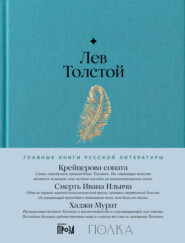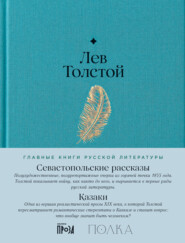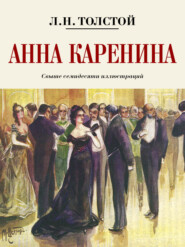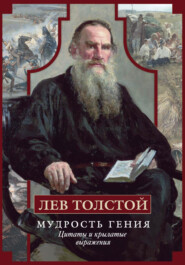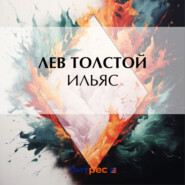По всем вопросам обращайтесь на: info@litportal.ru
(©) 2003-2024.
✖
The Kingdom of God is Within You; What is Art?
Настройки чтения
Размер шрифта
Высота строк
Поля
But Wagner is not only a musician, he is also a poet, or both together; and therefore, to judge of Wagner, one must know his poetry also – that same poetry which the music has to subserve. The chief poetical production of Wagner is "The Nibelung's Ring." This work has attained such enormous importance in our time, and has such influence on all that now professes to be art, that it is necessary for every one to-day to have some idea of it. I have carefully read through the four booklets which contain this work, and have drawn up a brief summary of it, which I give in Appendix III. I would strongly advise the reader (if he has not perused the poem itself, which would be the best thing to do) at least to read my account of it, so as to have an idea of this extraordinary work. It is a model work of counterfeit art, so gross as to be even ridiculous.
But we are told that it is impossible to judge of Wagner's works without seeing them on the stage. The Second Day of this drama, which, as I was told, is the best part of the whole work, was given in Moscow last winter, and I went to see the performance.
When I arrived the enormous theater was already filled from top to bottom. There were grand dukes, and the flower of the aristocracy, of the merchant class, of the learned, and of the middle-class official public. Most of them held the libretto, fathoming its meaning. Musicians – some of them elderly, gray-haired men – followed the music, score in hand. Evidently the performance of this work was an event of importance.
I was rather late, but I was told that the short prelude, with which the act begins, was of little importance, and that it did not matter having missed it. When I arrived, an actor sat on the stage amid decorations intended to represent a cave, and before something which was meant to represent a smith's forge. He was dressed in trico-tights, with a cloak of skins, wore a wig and an artificial beard, and with white, weak genteel hands (his easy movements, and especially the shape of his stomach and his lack of muscle revealed the actor) beat an impossible sword with an unnatural hammer in a way in which no one ever uses a hammer; and at the same time, opening his mouth in a strange way, he sang something incomprehensible. The music of various instruments accompanied the strange sounds which he emitted. From the libretto one was able to gather that the actor had to represent a powerful gnome, who lived in the cave, and who was forging a sword for Siegfried, whom he had reared. One could tell he was a gnome by the fact that the actor walked all the time bending the knees of his trico-covered legs. This gnome, still opening his mouth in the same strange way, long continued to sing or shout. The music meanwhile runs over something strange, like beginnings which are not continued and do not get finished. From the libretto one could learn that the gnome is telling himself about a ring which a giant had obtained, and which the gnome wishes to procure through Siegfried's aid, while Siegfried wants a good sword, on the forging of which the gnome is occupied. After this conversation or singing to himself has gone on rather a long time, other sounds are heard in the orchestra, also like something beginning and not finishing, and another actor appears, with a horn slung over his shoulder, and accompanied by a man running on all fours dressed up as a bear, whom he sets at the smith-gnome. The latter runs away without unbending the knees of his trico-covered legs. This actor with the horn represented the hero, Siegfried. The sounds which were emitted in the orchestra on the entrance of this actor were intended to represent Siegfried's character, and are called Siegfried's leit-motiv. And these sounds are repeated each time Siegfried appears. There is one fixed combination of sounds, or leit-motiv, for each character, and this leit-motiv is repeated every time the person whom it represents appears; and when any one is mentioned the motiv is heard which relates to that person. Moreover, each article also has its own leit-motiv or chord. There is a motiv of the ring, a motiv of the helmet, a motiv of the apple, a motiv of fire, spear, sword, water, etc.; and as soon as the ring, helmet, or apple is mentioned, the motiv or chord of the ring, helmet, or apple is heard. The actor with the horn opens his mouth as unnaturally as the gnome, and long continues in a chanting voice to shout some words, and in a similar chant Mime (that is the gnome's name) answers something or other to him. The meaning of this conversation can only be discovered from the libretto; and it is that Siegfried was brought up by the gnome, and therefore, for some reason, hates him and always wishes to kill him. The gnome has forged a sword for Siegfried, but Siegfried is dissatisfied with it. From a ten-page conversation (by the libretto), lasting half an hour and conducted with the same strange openings of the mouth, and chantings, it appears that Siegfried's mother gave birth to him in the wood, and that concerning his father all that is known is that he had a sword which was broken, the pieces of which are in Mime's possession, and that Siegfried does not know fear and wishes to go out of the wood. Mime, however, does not want to let him go. During the conversation the music never omits, at the mention of father, sword, etc., to sound the motiv of these people and things. After these conversations fresh sounds are heard – those of the god Wotan – and a wanderer appears. This wanderer is the god Wotan. Also dressed up in a wig, and also in tights, this god Wotan, standing in a stupid pose with a spear, thinks proper to recount what Mime must have known before, but what it is necessary to tell the audience. He does not tell it simply, but in the form of riddles which he orders himself to guess, staking his head (one does not know why) that he will guess right. Moreover, whenever the wanderer strikes his spear on the ground, fire comes out of the ground, and in the orchestra the sounds of spear and of fire are heard. The orchestra accompanies the conversation, and the motiv of the people and things spoken of are always artfully intermingled. Besides this the music expresses feelings in the most naïve manner: the terrible by sounds in the bass, the frivolous by rapid touches in the treble, etc.
The riddles have no meaning except to tell the audience what the nibelungs are, what the giants are, what the gods are, and what has happened before. This conversation also is chanted with strangely opened mouths and continues for eight libretto pages, and correspondingly long on the stage. After this the wanderer departs, and Siegfried returns and talks with Mime for thirteen pages more. There is not a single melody the whole of this time, but merely intertwinings of the leit-motiv of the people and things mentioned. The conversation tells that Mime wishes to teach Siegfried fear, and that Siegfried does not know what fear is. Having finished this conversation, Siegfried seizes one of the pieces of what is meant to represent the broken sword, saws it up, puts it on what is meant to represent the forge, melts it, and then forges it and sings: Heiho! heiho! heiho! Ho! ho! Aha! oho! aha! Heiaho! heiaho! heiaho! Ho! ho! Hahei! hoho! hahei! and Act I. finishes.
As far as the question I had come to the theater to decide was concerned, my mind was fully made up, as surely as on the question of the merits of my lady acquaintance's novel when she read me the scene between the loose-haired maiden in the white dress and the hero with two white dogs and a hat with a feather à la Guillaume Tell.
From an author who could compose such spurious scenes, outraging all æsthetic feeling, as those which I had witnessed, there was nothing to be hoped; it may safely be decided that all that such an author can write will be bad, because he evidently does not know what a true work of art is. I wished to leave, but the friends I was with asked me to remain, declaring that one could not form an opinion by that one act, and that the second would be better. So I stopped for the second act.
Act II., night. Afterward, dawn. In general, the whole piece is crammed with lights, clouds, moonlight, darkness, magic fires, thunder, etc.
The scene represents a wood, and in the wood there is a cave. At the entrance of the cave sits a third actor in tights, representing another gnome. It dawns. Enter the god Wotan, again with a spear, and again in the guise of a wanderer. Again his sounds, together with fresh sounds of the deepest bass that can be produced. These latter indicate that the dragon is speaking. Wotan awakens the dragon. The same bass sounds are repeated, growing yet deeper and deeper. First the dragon says, "I want to sleep," but afterward he crawls out of the cave. The dragon is represented by two men; it is dressed in a green, scaly skin, waves a tail at one end, while at the other it opens a kind of crocodile's jaw that is fastened on, and from which flames appear. The dragon (who is meant to be dreadful, and may appear so to five-year-old children) speaks some words in a terribly bass voice. This is all so stupid, so like what is done in a booth at a fair, that it is surprising that people over seven years of age can witness it seriously; yet thousands of quasi-cultured people sit and attentively hear and see it, and are delighted.
Siegfried, with his horn, reappears, as does Mime also. In the orchestra the sounds denoting them are emitted, and they talk about whether Siegfried does or does not know what fear is. Mime goes away, and a scene commences which is intended to be most poetical. Siegfried, in his tights, lies down in a would-be beautiful pose, and alternately keeps silent and talks to himself. He ponders, listens to the song of birds, and wishes to imitate them. For this purpose he cuts a reed with his sword and makes a pipe. The dawn grows brighter and brighter; the birds sing. Siegfried tries to imitate the birds. In the orchestra is heard the imitation of birds, alternating with sounds corresponding to the words he speaks. But Siegfried does not succeed with his pipe-playing, so he plays on his horn instead. This scene is unendurable. Of music, i. e. of art serving as a means to transmit a state of mind experienced by the author, there is not even a suggestion. There is something that is absolutely unintelligible musically. In a musical sense a hope is continually experienced, followed by disappointment, as if a musical thought were commenced only to be broken off. If there are something like musical commencements, these commencements are so short, so encumbered with complications of harmony and orchestration and with effects of contrast, are so obscure and unfinished, and what is happening on the stage meanwhile is so abominably false, that it is difficult even to perceive these musical snatches, let alone to be infected by them. Above all, from the very beginning to the very end, and in each note, the author's purpose is so audible and visible that one sees and hears neither Siegfried nor the birds, but only a limited, self-opinionated German, of bad taste and bad style, who has a most false conception of poetry, and who, in the rudest and most primitive manner, wishes to transmit to me these false and mistaken conceptions of his.
Every one knows the feeling of distrust and resistance which is always evoked by an author's evident predetermination. A narrator need only say in advance, Prepare to cry or to laugh, and you are sure neither to cry nor to laugh. But when you see that an author prescribes emotion at what is not touching, but only laughable or disgusting, and when you see, moreover, that the author is fully assured that he has captivated you, a painfully tormenting feeling results, similar to what one would feel if an old, deformed woman put on a ball-dress, and smilingly coquetted before you, confident of your approbation. This impression was strengthened by the fact that around me I saw a crowd of three thousand people, who not only patiently witnessed all this absurd nonsense, but even considered it their duty to be delighted with it.
I somehow managed to sit out the next scene also, in which the monster appears, to the accompaniment of his bass notes intermingled with the motiv of Siegfried; but after the fight with the monster, and all the roars, fires, and sword-wavings, I could stand no more of it, and escaped from the theater with a feeling of repulsion which, even now, I cannot forget.
Listening to this opera, I involuntarily thought of a respected, wise, educated country laborer, – one, for instance, of those wise and truly religious men whom I know among the peasants, – and I pictured to myself the terrible perplexity such a man would be in were he to witness what I was seeing that evening.
What would he think if he knew of all the labor spent on such a performance, and saw that audience, those great ones of the earth, – old, bald-headed, gray-bearded men, whom he had been accustomed to respect, – sit silent and attentive, listening to and looking at all these stupidities for five hours on end? Not to speak of an adult laborer, one can hardly imagine even a child of over seven occupying himself with such a stupid, incoherent fairy tale.
And yet an enormous audience, the cream of the cultured upper classes, sits out five hours of this insane performance, and goes away imagining that by paying tribute to this nonsense it has acquired a fresh right to esteem itself advanced and enlightened.
I speak of the Moscow public. But what is the Moscow public? It is but a hundredth part of that public which, while considering itself most highly enlightened, esteems it a merit to have so lost the capacity of being infected by art, that not only can it witness this stupid sham without being revolted, but can even take delight in it.
In Bayreuth, where these performances were first given, people who consider themselves finely cultured assembled from the ends of the earth, spent, say one hundred pounds each, to see this performance, and for four days running they went to see and hear this nonsensical rubbish, sitting it out for six hours each day.
But why did people go, and why do they still go to these performances, and why do they admire them? The question naturally presents itself: How is the success of Wagner's works to be explained?
That success I explain to myself in this way: thanks to his exceptional position in having at his disposal the resources of a king, Wagner was able to command all the methods for counterfeiting art which have been developed by long usage, and, employing these methods with great ability, he produced a model work of counterfeit art. The reason why I have selected his work for my illustration is, that in no other counterfeit of art known to me are all the methods by which art is counterfeited – namely, borrowings, imitation, effects, and interestingness – so ably and powerfully united.
From the subject, borrowed from antiquity, to the clouds and the risings of the sun and moon, Wagner, in this work, has made use of all that is considered poetical. We have here the sleeping beauty, and nymphs, and subterranean fires, and gnomes, and battles, and swords, and love, and incest, and a monster, and singing-birds – the whole arsenal of the poetical is brought into action.
Moreover, everything is imitative; the decorations are imitated, and the costumes are imitated. All are just as, according to the data supplied by archæology, they would have been in antiquity. The very sounds are imitative; for Wagner, who was not destitute of musical talent, invented just such sounds as imitate the strokes of a hammer, the hissing of molten iron, the singing of birds, etc.
Furthermore, in this work everything is in the highest degree striking in its effects and in its peculiarities: its monsters, its magic fires, and its scenes under water; the darkness in which the audience sit, the invisibility of the orchestra, and the hitherto unemployed combinations of harmony.
And besides, it is all interesting. The interest lies not only in the question who will kill whom, and who will marry whom, and who is whose son, and what will happen next? – the interest lies also in the relation of the music to the text. The rolling waves of the Rhine – now how is that to be expressed in music? An evil gnome appears – how is the music to express an evil gnome? – and how is it to express the sensuality of this gnome? How will bravery, fire, or apples be expressed in music? How are the leit-motiv of the people speaking to be interwoven with the leit-motiv of the people and objects about whom they speak? Besides, the music has a further interest. It diverges from all formerly accepted laws, and most unexpected and totally new modulations crop up (as is not only possible, but even easy in music having no inner law of its being); the dissonances are new, and are allowed in a new way – and this, too, is interesting.
And it is this poeticality, imitativeness, effectfulness, and interestingness which, thanks to the peculiarities of Wagner's talent, and to the advantageous position in which he was placed, are in these productions carried to the highest pitch of perfection, that so act on the spectator, hypnotizing him as one would be hypnotized who should listen for several consecutive hours to the ravings of a maniac pronounced with great oratorical power.
People say: "You cannot judge without having seen Wagner performed at Bayreuth: in the dark, where the orchestra is out of sight concealed under the stage, and where the performance is brought to the highest perfection." And this just proves that we have here no question of art, but one of hypnotism. It is just what the spiritualists say. To convince you of the reality of their apparitions they usually say, "You cannot judge; you must try it, be present at several séances," i. e. come and sit silent in the dark for hours together in the same room with semi-sane people, and repeat this some ten times over, and you shall see all that we see.
Yes, naturally! Only place yourself in such conditions, and you may see what you will. But this can be still more quickly attained by getting drunk or smoking opium. It is the same when listening to an opera of Wagner's. Sit in the dark for four days in company with people who are not quite normal, and, through the auditory nerves, subject your brain to the strongest action of the sounds best adapted to excite it, and you will no doubt be reduced to an abnormal condition, and be enchanted by absurdities. But to attain this end you do not even need four days; the five hours during which one "day" is enacted, as in Moscow, are quite enough. Nor are five hours needed; even one hour is enough for people who have no clear conception of what art should be, and who have come to the conclusion in advance that what they are going to see is excellent, and that indifference or dissatisfaction with this work will serve as a proof of their inferiority and lack of culture.
I observed the audience present at this representation. The people who led the whole audience and gave the tone to it were those who had previously been hypnotized, and who again succumbed to the hypnotic influence to which they were accustomed. These hypnotized people, being in an abnormal condition, were perfectly enraptured. Moreover, all the art critics, who lack the capacity to be infected by art and therefore always especially prize works like Wagner's opera where it is all an affair of the intellect, also, with much profundity, expressed their approval of a work affording such ample material for ratiocination. And following these two groups went that large city crowd (indifferent to art, with their capacity to be infected by it perverted and partly atrophied), headed by the princes, millionaires, and art patrons, who, like sorry harriers, keep close to those who most loudly and decidedly express their opinion.
"Oh, yes, certainly! What poetry! Marvelous! Especially the birds!" "Yes, yes! I am quite vanquished!" exclaim these people, repeating in various tones what they have just heard from men whose opinion appears to them authoritative.
If some people do feel insulted by the absurdity and spuriousness of the whole thing, they are timidly silent, as sober men are timid and silent when surrounded by tipsy ones.
And thus, thanks to the masterly skill with which it counterfeits art while having nothing in common with it, a meaningless, coarse, spurious production finds acceptance all over the world, costs millions of roubles to produce, and assists more and more to pervert the taste of people of the upper classes and their conception of what is art.
CHAPTER XIV
I know that most men – not only those considered clever, but even those who are very clever, and capable of understanding most difficult scientific, mathematical, or philosophic problems – can very seldom discern even the simplest and most obvious truth if it be such as to oblige them to admit the falsity of conclusions they have formed, perhaps with much difficulty – conclusions of which they are proud, which they have taught to others, and on which they have built their lives. And therefore I have little hope that what I adduce as to the perversion of art and taste in our society will be accepted or even seriously considered. Nevertheless, I must state fully the inevitable conclusion to which my investigation into the question of art has brought me. This investigation has brought me to the conviction that almost all that our society considers to be art, good art, and the whole of art, far from being real and good art, and the whole of art, is not even art at all, but only a counterfeit of it. This position, I know, will seem very strange and paradoxical; but if we once acknowledge art to be a human activity by means of which some people transmit their feelings to others (and not a service of Beauty, nor a manifestation of the Idea, and so forth), we shall inevitably have to admit this further conclusion also. If it is true that art is an activity by means of which one man, having experienced a feeling, intentionally transmits it to others, then we have inevitably to admit further, that of all that among us is termed the art of the upper classes – of all those novels, stories, dramas, comedies, pictures, sculptures, symphonies, operas, operettas, ballets, etc., which profess to be works of art – scarcely one in a hundred thousand proceeds from an emotion felt by its author, all the rest being but manufactured counterfeits of art, in which borrowing, imitating, effects, and interestingness replace the contagion of feeling. That the proportion of real productions of art is to the counterfeits as one to some hundreds of thousands or even more, may be seen by the following calculation. I have read somewhere that the artist painters in Paris alone number 30,000; there will probably be as many in England, as many in Germany, and as many in Russia, Italy, and the smaller states combined. So that in all there will be in Europe, say, 120,000 painters; and there are probably as many musicians and as many literary artists. If these 360,000 individuals produce three works a year each (and many of them produce ten or more), then each year yields over a million so-called works of art. How many, then, must have been produced in the last ten years, and how many in the whole time since upper-class art broke off from the art of the whole people? Evidently millions. Yet who of all the connoisseurs of art has received impressions from all these pseudo works of art? Not to mention all the laboring classes who have no conception of these productions, even people of the upper classes cannot know one in a thousand of them all, and cannot remember those they have known. These works all appear under the guise of art, produce no impression on any one (except when they serve as pastimes for the idle crowd of rich people), and vanish utterly.
In reply to this it is usually said that without this enormous number of unsuccessful attempts we should not have the real works of art. But such reasoning is as though a baker, in reply to a reproach that his bread was bad, were to say that if it were not for the hundreds of spoiled loaves there would not be any well-baked ones. It is true that where there is gold there is also much sand; but that cannot serve as a reason for talking a lot of nonsense in order to say something wise.
We are surrounded by productions considered artistic. Thousands of verses, thousands of poems, thousands of novels, thousands of dramas, thousands of pictures, thousands of musical pieces, follow one after another. All the verses describe love, or nature, or the author's state of mind, and in all of them rhyme and rhythm are observed. All the dramas and comedies are splendidly mounted and are performed by admirably trained actors. All the novels are divided into chapters; all of them describe love, contain effective situations, and correctly describe the details of life. All the symphonies contain allegro, andante, scherzo, and finale; all consist of modulations and chords, and are played by highly trained musicians. All the pictures, in gold frames, saliently depict faces and sundry accessories. But among these productions in the various branches of art, there is in each branch one among hundreds of thousands, not only somewhat better than the rest, but differing from them as a diamond differs from paste. The one is priceless, the others not only have no value, but are worse than valueless, for they deceive and pervert taste. And yet, externally, they are, to a man of perverted or atrophied artistic perception, precisely alike.
In our society the difficulty of recognizing real works of art is further increased by the fact that the external quality of the work in false productions is not only no worse, but often better, than in real ones; the counterfeit is often more effective than the real, and its subject more interesting. How is one to discriminate? How is one to find a production in no way distinguished in externals from hundreds of thousands of others intentionally made to imitate it precisely?
For a country peasant of unperverted taste this is as easy as it is for an animal of unspoilt scent to follow the trace he needs among a thousand others in wood or forest. The animal unerringly finds what he needs. So also the man, if only his natural qualities have not been perverted, will, without fail, select from among thousands of objects the real work of art he requires, – that infecting him with the feeling experienced by the artist. But it is not so with those whose taste has been perverted by their education and life. The receptive feeling for art of these people is atrophied, and in valuing artistic productions they must be guided by discussion and study, which discussion and study completely confuse them. So that most people in our society are quite unable to distinguish a work of art from the grossest counterfeit. People sit for whole hours in concert-rooms and theaters listening to the new composers, consider it a duty to read the novels of the famous modern novelists, and to look at pictures representing either something incomprehensible, or just the very things they see much better in real life; and, above all, they consider it incumbent on them to be enraptured by all this, imagining it all to be art, while at the same time they will pass real works of art by, not only without attention, but even with contempt, merely because, in their circle, these works are not included in the list of works of art.
A few days ago I was returning home from a walk feeling depressed, as occurs sometimes. On nearing the house I heard the loud singing of a large choir of peasant women. They were welcoming my daughter, celebrating her return home after her marriage. In this singing, with its cries and clanging of scythes, such a definite feeling of joy, cheerfulness, and energy was expressed, that, without noticing how it infected me, I continued my way toward the house in a better mood, and reached home smiling, and quite in good spirits. That same evening, a visitor, an admirable musician, famed for his execution of classical music, and particularly of Beethoven, played us Beethoven's sonata, Opus 101. For the benefit of those who might otherwise attribute my judgment of that sonata of Beethoven to non-comprehension of it, I should mention that, whatever other people understand of that sonata and of other productions of Beethoven's later period, I, being very susceptible to music, equally understood. For a long time I used to attune myself so as to delight in those shapeless improvisations which form the subject-matter of the works of Beethoven's later period, but I had only to consider the question of art seriously, and to compare the impression I received from Beethoven's later works with those pleasant, clear, and strong musical impressions which are transmitted, for instance, by the melodies of Bach (his arias), Haydn, Mozart, Chopin, (when his melodies are not overloaded with complications and ornamentation), and of Beethoven himself in his earlier period, and, above all, with the impressions produced by folk-songs, – Italian, Norwegian, or Russian, – by the Hungarian tzardas, and other such simple, clear, and powerful music, and the obscure, almost unhealthy excitement from Beethoven's later pieces that I had artificially evoked in myself was immediately destroyed.
On the completion of the performance (though it was noticeable that every one had become dull) those present, in the accepted manner, warmly praised Beethoven's profound production, and did not forget to add that formerly they had not been able to understand that last period of his, but that they now saw that he was really then at his very best. And when I ventured to compare the impression made on me by the singing of the peasant women – an impression which had been shared by all who heard it – with the effect of this sonata, the admirers of Beethoven only smiled contemptuously, not considering it necessary to reply to such strange remarks.
But, for all that, the song of the peasant women was real art, transmitting a definite and strong feeling; while the 101st sonata of Beethoven was only an unsuccessful attempt at art, containing no definite feeling, and therefore not infectious.
For my work on art I have this winter read diligently, though with great effort, the celebrated novels and stories, praised by all Europe, written by Zola, Bourget, Huysmans, and Kipling. At the same time I chanced on a story in a child's magazine, and by a quite unknown writer, which told of the Easter preparations in a poor widow's family. The story tells how the mother managed with difficulty to obtain some wheat-flour, which she poured on the table ready to knead. She then went out to procure some yeast, telling the children not to leave the hut, and to take care of the flour. When the mother had gone, some other children ran shouting near the window, calling those in the hut to come to play. The children forgot their mother's warning, ran into the street, and were soon engrossed in the game. The mother, on her return with the yeast, finds a hen on the table throwing the last of the flour to her chickens, who were busily picking it out of the dust of the earthen floor. The mother, in despair, scolds the children, who cry bitterly. And the mother begins to feel pity for them – but the white flour has all gone. So to mend matters she decides to make the Easter cake with sifted rye-flour, brushing it over with white of egg, and surrounding it with eggs. "Rye-bread which we bake is akin to any cake," says the mother, using a rhyming proverb to console the children for not having an Easter cake made with white flour. And the children, quickly passing from despair to rapture, repeat the proverb and await the Easter cake more merrily even than before.
Well! the reading of the novels and stories by Zola, Bourget, Huysmans, Kipling, and others, handling the most harrowing subjects, did not touch me for one moment, and I was provoked with the authors all the while, as one is provoked with a man who considers you so naïve that he does not even conceal the trick by which he intends to take you in. From the first lines you see the intention with which the book is written, and the details all become superfluous, and one feels dull. Above all, one knows that the author had no other feeling all the time than a desire to write a story or a novel, and so one receives no artistic impression. On the other hand, I could not tear myself away from the unknown author's tale of the children and the chickens, because I was at once infected by the feeling which the author had evidently experienced, reëvoked in himself, and transmitted.
Vasnetsoff is one of our Russian painters. He has painted ecclesiastical pictures in Kieff Cathedral, and every one praises him as the founder of some new, elevated kind of Christian art. He worked at those pictures for ten years, was paid tens of thousands of roubles for them, and they are all simply bad imitations of imitations of imitations, destitute of any spark of feeling. And this same Vasnetsoff drew a picture for Tourgenieff's story, "The Quail" (in which it is told how, in his son's presence, a father killed a quail and felt pity for it), showing the boy asleep with pouting upper lip, and above him, as a dream, the quail. And this picture is a true work of art.
In the English Academy of 1897 two pictures were exhibited together; one of which, by J. C. Dolman, was the temptation of St. Anthony. The saint is on his knees praying. Behind him stands a naked woman and animals of some kind. It is apparent that the naked woman pleased the artist very much, but that Anthony did not concern him at all; and that, so far from the temptation being terrible to him (the artist) it is highly agreeable. And therefore if there be any art in this picture, it is very nasty and false. Next in the same book of academy pictures comes a picture by Langley, showing a stray beggar-boy, who has evidently been called in by a woman who has taken pity on him. The boy, pitifully drawing his bare feet under the bench, is eating; the woman is looking on, probably considering whether he will not want some more; and a girl of about seven, leaning on her arm, is carefully and seriously looking on, not taking her eyes from the hungry boy, and evidently understanding for the first time what poverty is, and what inequality among people is, and asking herself why she has everything provided for her while this boy goes barefoot and hungry? She feels sorry, and yet pleased. And she loves both the boy and goodness… And one feels that the artist loved this girl, and that she too loves. And this picture, by an artist who, I think, is not very widely known, is an admirable and true work of art.
I remember seeing a performance of "Hamlet" by Rossi. Both the tragedy itself and the performer who took the chief part are considered by our critics to represent the climax of supreme dramatic art. And yet, both from the subject-matter of the drama and from the performance, I experienced all the time that peculiar suffering which is caused by false imitations of works of art. And I lately read of a theatrical performance among the savage tribe, the Voguls. A spectator describes the play. A big Vogul and a little one, both dressed in reindeer skins, represent a reindeer-doe and its young. A third Vogul, with a bow, represents a huntsman on snow-shoes, and a fourth imitates with his voice a bird that warns the reindeer of their danger. The play is that the huntsman follows the track that the doe with its young one has traveled. The deer run off the scene, and again reappear. (Such performances take place in a small tent-house.) The huntsman gains more and more on the pursued. The little deer is tired, and presses against its mother. The doe stops to draw breath. The hunter comes up with them and draws his bow. But just then the bird sounds its note, warning the deer of their danger. They escape. Again there is a chase, and again the hunter gains on them, catches them, and lets fly his arrow. The arrow strikes the young deer. Unable to run, the little one presses against its mother. The mother licks its wound. The hunter draws another arrow. The audience, as the eye-witness describes them, are paralyzed with suspense; deep groans and even weeping is heard among them. And, from the mere description, I felt that this was a true work of art.
What I am saying will be considered irrational paradox, at which one can only be amazed; but for all that I must say what I think; namely, that people of our circle, of whom some compose verses, stories, novels, operas, symphonies, and sonatas, paint all kinds of pictures and make statues, while others hear and look at these things, and again others appraise and criticize it all, discuss, condemn, triumph, and raise monuments to one another, generation after generation, – that all these people, with very few exceptions, artists, and public, and critics, have never (except in childhood and earliest youth, before hearing any discussions on art) experienced that simple feeling familiar to the plainest man and even to a child, that sense of infection with another's feeling, – compelling us to joy in another's gladness, to sorrow at another's grief, and to mingle souls with another, – which is the very essence of art. And therefore these people not only cannot distinguish true works of art from counterfeits, but continually mistake for real art the worst and most artificial, while they do not even perceive works of real art, because the counterfeits are always more ornate, while true art is modest.
CHAPTER XV
Art, in our society, has been so perverted that not only has bad art come to be considered good, but even the very perception of what art really is has been lost. In order to be able to speak about the art of our society, it is, therefore, first of all necessary to distinguish art from counterfeit art.
There is one indubitable indication distinguishing real art from its counterfeit, namely, the infectiousness of art. If a man, without exercising effort and without altering his standpoint, on reading, hearing, or seeing another man's work, experiences a mental condition which unites him with that man and with other people who also partake of that work of art, then the object evoking that condition is a work of art. And however poetical, realistic, effectful, or interesting a work may be, it is not a work of art if it does not evoke that feeling (quite distinct from all other feelings) of joy, and of spiritual union with another (the author) and with others (those who are also infected by it).
It is true that this indication is an internal one, and that there are people who have forgotten what the action of real art is, who expect something else from art (in our society the great majority are in this state), and that therefore such people may mistake for this æsthetic feeling the feeling of divertisement and a certain excitement which they receive from counterfeits of art. But though it is impossible to undeceive these people, just as it is impossible to convince a man suffering from "Daltonism" that green is not red, yet, for all that, this indication remains perfectly definite to those whose feeling for art is neither perverted nor atrophied, and it clearly distinguishes the feeling produced by art from all other feelings.
The chief peculiarity of this feeling is that the receiver of a true artistic impression is so united to the artist that he feels as if the work were his own and not some one else's, – as if what it expresses were just what he had long been wishing to express. A real work of art destroys, in the consciousness of the receiver, the separation between himself and the artist; nor that alone, but also between himself and all whose minds receive this work of art. In this freeing of our personality from its separation and isolation, in this uniting of it with others, lies the chief characteristic and the great attractive force of art.






